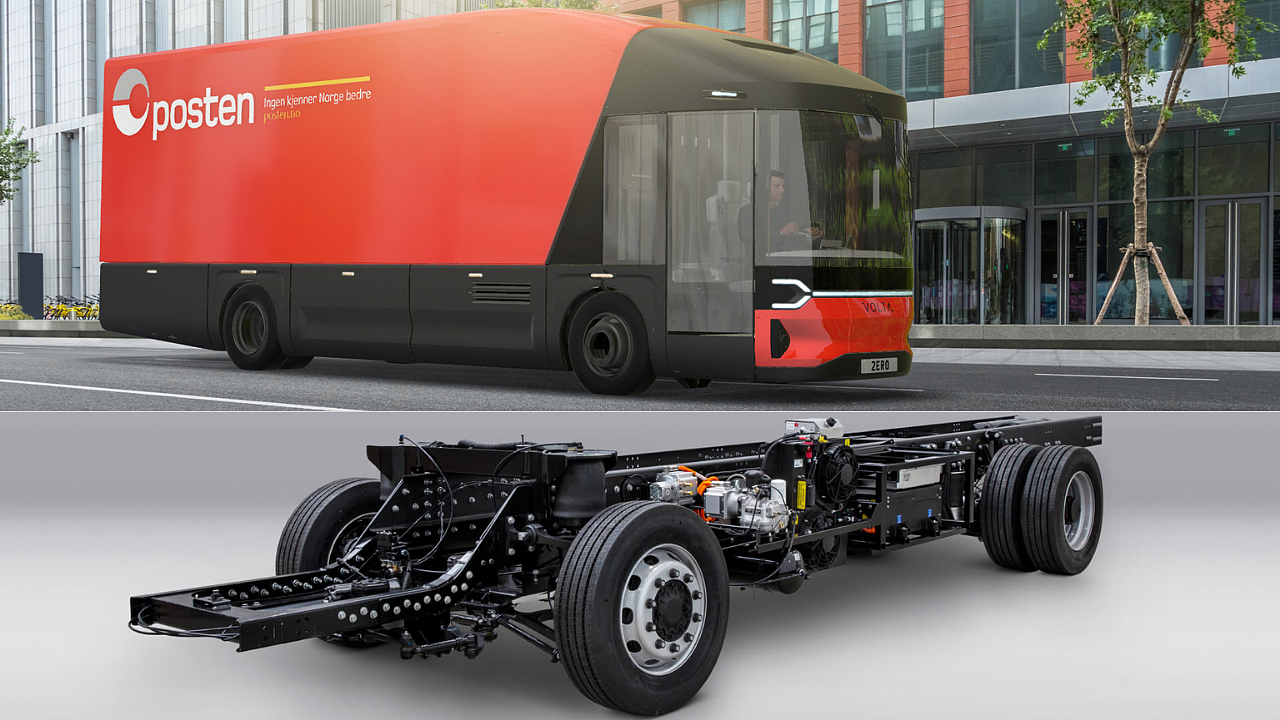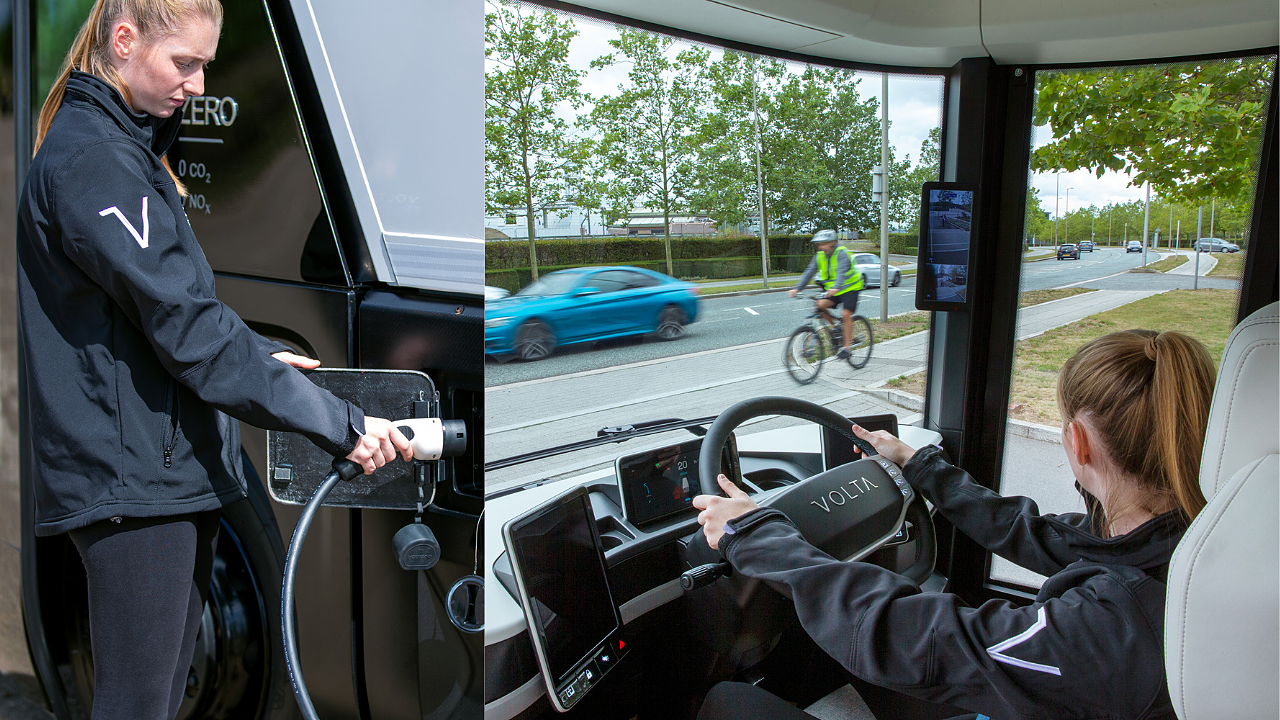
Dr Seshu Bhagavathula is a technocrat and an auto industry veteran, currently serving as Board of Director at Volta Trucks, Sweden. He also works as a strategic advisor to Jebsen Capital (Hong Kong) on their automotive investments.
What are the key drivers for the promoters of Volta Trucks to develop a complete electric truck?
The objective was to support making the cities cleaner as they are more polluted due to several transportation activities. Even more during the pandemic, several hundreds of packets were being delivered every day, with too many trucks coming into the downtown residential areas.
The top slot in the EV truck segment was catered to by big companies with long-haul trucks, while smaller players were in the two to three-tonne category. So Volta decided to pursue the missing mid-segment from 7.5 tonne up to 20 tonne with emission-free products. These are ideal for a hub and spoke model. And that’s where they started.
Also, the drivers of urban delivery trucks step out and get in many times during their work. Hence, it was decided to give a low floor entry, so they can almost walk in from the pavement.
Thirdly, the idea was to make one model (no LH or RH drive) for the whole world so that the same design can be sold in Japan or UK or the United States. This obviously comes with specific design considerations because the driver is sitting in the middle.
Would this not affect the orientation of the drivers and their road judgement?
The distance to the left and right is more than usual. On one side (sitting on the left or right side), we knew exactly where to look at. So, we have placed cameras outside and big displays at the same angle we are used to looking at (on the A-pillar). The big displays give a little more, or all the information, from the left side to the right side. The display is a rear-view mirror, so to say.

Would the drivers not take time to get acclimatised to these particular change?
Actually, in our trials, this has posed no issues at all. It does take a bit of getting used to, but it is similar to you renting a car at the airport that is from a different brand than you are generally used to, but once you are settled, it is as natural as in any other vehicle. Probably there’s a good chance that many others would start adopting this over time.
From the regulations or homologation point of view, do you foresee any issues?
Yes, there will be. In some cases, homologation requires specific country dependent features to be fine-tuned. For instance, when we park a vehicle on the left or the right side of the road in Japan, the mirror must show the pavement. The angle of the mirror changes. However, things like this can be modified through software or package-protected right at the design phase.
Why has Volta been making much noise with its debut product?
Firstly, at Volta Trucks, a driver-centric approach to comfort and safety is at the heart of our design philosophy – enhancing drivers’ premium experience and working environment. Volta Trucks’ physical ‘Ergonomic Design Model’ has been created to refine the driver experience through subtle design refinements that create a comfortable and well-positioned cab set-up, prioritising safety in all operations.
On the other side, let’s look at the market. There is no e-truck in the 16T, 19T, 12T or 7.5T segment available today. A big portion of the urban delivery traffic is in these GVW categories. There is a demand in the market; so why not cater to it? When there is a market gap existing, it is prudent to occupy it.
The noise comes from the fact that Volta Zero is unique in its design, look and features. It is an entirely new design with fresh ideas that do not influence traditional trucks. In the urban delivery segment, there have been no emission-free products.
Last but not the least is the amount of attention we get from our customers and strategic partners. We have a solid pipeline of orders already, and most of these customers are engaging with us in a so-called ‘co-creation’ process, thereby getting their requirements integrated into our design philosophies.
Can you tell us about the uniqueness of the motor and the battery?
The rear axle with an integrated high voltage motor tuned with electronic gearing that is well balanced with the 600 V NMCA (Nickel-Manganese-Cobalt-Aluminium) battery and the control systems, is the uniqueness of the Volta Zero powertrain architecture. This saves some valuable space that allows new ways of designing the cross and horizontal elements on the chassis. Therefore, there are minimal translational issues and less loss in energy.
The battery stretches from the front to the rear, more or less, placed between the two side members of the chassis. The structure gives more stability, improves the driving dynamics, and offers better freedom for placing cross elements on the chassis. Consequently, cabling becomes much more manageable.
The other advantage is integrated thermal management of all the energy-consuming components, including the cabin elements and chassis components. The NMCA battery has less cobalt, and we all know the story about cobalt processing issues.
Sustainability goes through everything that we do at Volta. The load-carrying body comes with plant-based flax fibres that are as good as the metallic or other traditional composite structures in strength and flexibility. Our battery itself is more performant than the regular NMC battery. Reduction of the cobalt content has a considerable effect on the overall carbon footprint of the energy equation between well to wheel.
What is the speciality of NMCA batteries?
Lithium-ion battery with NMCA cathode gives a better and longer life cycle, eventually giving more cycles of charging up to 10%. It also improves the thermal stability of the cathode, which in turn contributes to the safer battery. Additionally, there’s no change in charging temperature.
The battery management system (BMS) in Volta monitors many parameters. Here it tries to charge all the battery cells at the same rate, unlike the conventional method that charges cells based on their individual holding capacity, which causes imbalances across the life of a battery. Instead, the BMS in Volta brings all the cells all the time to the same state of charge.
What about cables?
A flat battery reduces the wiring harness complexity. In addition, well-distributed aggregates and components across the chassis’ rails give optimal routing of cables along the whole width and length of the vehicle.
Is there any innovation in the in-vehicle charging unit?
In the truck, the driver always goes out on the pavement side. With centre-positioned steering, the driver can exit through either of the two doors. Charging points can provided on both sides and can be package-protected in the design itself, to customise based on the market.
Can you tell us about the overall vehicle architecture?
Most of the truck is made of lightweight material. Typically rated payload in a 16 tonne truck is between 6.8 to seven tonne. But Volta offers a minimum of 8.1 tonne, which is enormous in commercial vehicle terms. This was possible due to lightweight material and consciously selecting the best material for each component, including replacing the conventional large size mirrors with lightweight cameras and displays.
The next-generation Volta vehicles will have more innovative architectures by replacing certain mechanical translations through x-by-wire architectures.

Compared to a diesel truck, how cost-effective is Volta?
The diesel truck acquired through a loan at this GVW would typically pay back in three years. With our truck, it will be possible within a year. There are many reasons for this. If you compare both forms of trucks for an average of 40,000 km a year, apart from the upfront acquisition cost difference between the trucks (i.e., the electric truck being about two times costlier than the diesel truck), the rest of all the operational parameters favour an electric truck.
The electricity charge, for charging, is only one-sixth of the cost of diesel. Also, electric trucks don’t need service like ICE trucks. There are minimal repairs. Electric vehicles don’t come back to the workshop so often.
The other fundamental difference is that these vehicles can operate for a more extended period. For instance, Europe will be allowing these trucks to be plied from 4 am in the downtown areas as there’s no noise, so you get more operational hours. There are no toll costs for electric vehicles – these can be substantial over the life cycle. There are no ad-blue costs, or other additional taxes for e-trucks; and therefore, almost zero maintenance costs.
When does the vehicle need a complete battery change?
The data from the million-odd electric passenger cars running in different countries shows no big problem with battery ageing. We believe it will be no longer a parameter for EV makers in the near future. We talk of seven to eight years of battery life because that’s what our battery provider says is possible. In practical terms though, they’re living much longer. But the question is still quite relevant, which will become an essential parameter for second life considerations or further sale in the second-hand markets that still need to evolve.
From the safety point of view, what is unique about Volta trucks?
The driver has a wide 220-degrees of direct vision around the vehicle. This panoramic view of the surroundings through a glasshouse-style cab delivers a transport for London five-star Direct Vision Standard rating for optimum visibility. Furthermore, the driver sits in a low and central position, eliminating blind spots and mirroring the eye-line of nearby pedestrians and other road users for easy visual communication.
In addition, the truck has all the sensors required for everyone’s safety, like cameras, radars, automatic cruise control, blind-spot detection, electronic/ normal mirrors, reverse camera and 360 degree view camera. Besides, the over-the-air updates of most of the parameters and software enable us to have better control over the life cycle management.
What is the roadmap for the launch?
The pilot fleets will be manufactured in the fourth quarter of this year, and the first deliveries for limited customer trials will start as and when they are ready, with many of these vehicles also going for extensive winter testing and validation. The launch of these 16T vehicles is being slated for the end of 2022. Then we will come with the 19T, 7.5T and 12T variants. The roadmaps are being discussed with the customers and will be made public soon.
Can you tell us about the manufacturing operations?
Initially, we will source the trucks through a contract manufacturing firm based in Western Europe, but we are looking at our own factory as soon as we establish our market strengths. We will announce the location of our manufacturing plant soon.